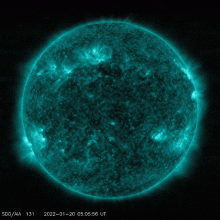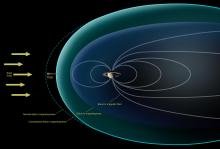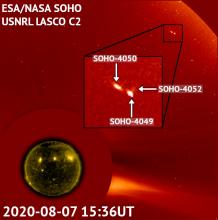Listen to today's episode of StarDate on the web the same day it airs in high-quality streaming audio without any extra ads or announcements. Choose a $8 one-month pass, or listen every day for a year for just $30.
You are here
Closer and Closer
The Sun can feel cold and remote at this time of year. But that’s not the case for a NASA spacecraft. It’s scheduled to fly less than nine million miles from the Sun tomorrow. That’s far closer than any other spacecraft has ever been.
Parker Solar Probe is designed to study the Sun’s magnetic field, plus the solar wind — a flow of charged particles that blows past Earth and the other planets. It recorded the interactions between the magnetic field and the solar wind during an earlier pass. It’s trying to find out how the wind is created.
It’s also trying to find out what heats the Sun’s outer atmosphere, the corona. It’s recorded “waves” produced as particles escape from the corona and join the solar wind.
Parker Solar Probe will accomplish those goals by getting closer and closer to the Sun. At its closest, in 2025, it’ll pass just 4.3 million miles from the Sun.
Reaching that point won’t be easy, though. The probe will fly past Venus several times, using the planet’s gravity to sculpt its orbit.
Parker carries a thick shield to protect it from the Sun’s heat. But it’s not exposed to the most intense radiation for long. When it’s close to the Sun it travels fast. Tomorrow, it’ll reach almost 300,000 miles per hour — fast enough to zip from coast to coast in about half a minute. Even so, it’ll be close to the Sun long enough to enhance our knowledge of our amazing star.
Script by Damond Benningfield






